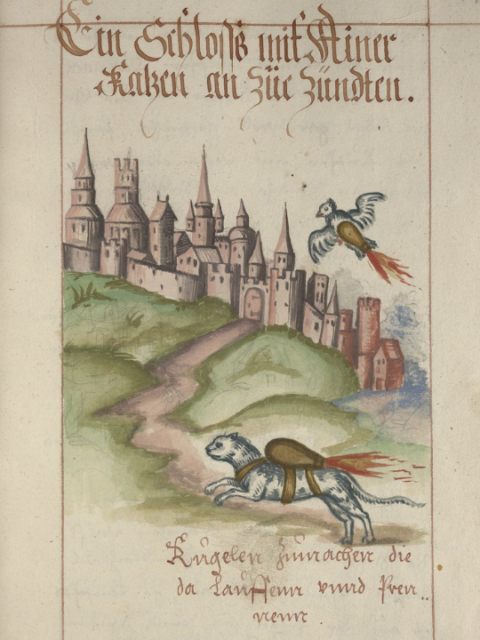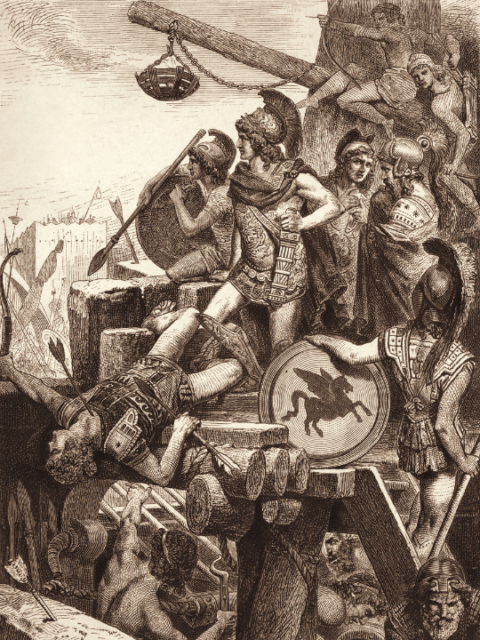Across the ages, warfare has been shaped by the ongoing contest between building stronger defenses and discovering ways to break through them. In today’s world, traditional sieges are nearly obsolete, as offensive technology reigns supreme. Bullets punch through body armor, anti-tank weapons make short work of armored vehicles, and precision missiles can level hardened bunkers with ease.
But this wasn’t always the case. For centuries, fortifications often proved far superior to the weapons brought against them. When a warrior’s most advanced tool was a club or a spear, what chance did they stand against towering stone walls? That imbalance forced inventors and armies alike to devise clever strategies for breaking barriers. Below are some of the more unusual approaches history has produced.
1. Rocket cats

In the 16th century, an artilleryman named Franz Helm, who resided in what is now Germany, wrote a book on munitions, weaponry, and artillery tactics. Within this book, he described a method for wreaking havoc on a defensive system or town using a cat. Helm explained:
Create a small sack like a fire-arrow. If you would like to get at a town or castle, seek to obtain a cat from that place. And bind the sack to the back of the cat, ignite it, let it glow well and thereafter let the cat go, so it runs to the nearest castle or town, and out of fear it thinks to hide itself where it ends up in barn hay or straw it will be ignited.
It remains unclear whether this rather ambitious plan was ever implemented, but if it was, it would have likely caused more harm to one’s own property than to the enemy’s.
2. Up the toilet

Instead of relying on siege engines or ladders, this method of entry exploited the castle’s own structure. Château Gaillard, a fortress built in France by Richard the Lionheart in 1198, was hailed as virtually unassailable. Yet less than a decade later, French King Philip II proved otherwise. His soldiers had overrun the outer defenses but were unable to crack the heavily fortified keep.
It was then that one observant attacker noticed a narrow waste channel built into the wall, leading from one of the castle’s latrines. Seizing the opportunity, a soldier crawled up through the foul passage, emerged inside the stronghold, and then unbarred a window to let the rest of the French troops pour in.
3. Flinging corpses

During a siege, armies often established a nearby camp to serve as their base of operations. These camps were typically filled with unwell, unclean soldiers, creating conditions where disease spread rapidly.
In 1346, the Mongols besieged the Crimean city of Caffa, leading to a prolonged standoff. Over time, the Mongol forces themselves fell victim to the Black Death, which ravaged their camp. Instead of withdrawing, as many armies might in such a situation, the Mongols seized the moment, using catapults to hurl disease-ridden corpses over the city walls in an effort to spread the disease among the defenders.
While it is uncertain, some fleeing residents of Caffa may have carried the Black Death into Europe.
4. Hot Sand

In 332 BC, during Alexander the Great’s siege of the city of Tyre, the defenders inside heated fine sand until it glowed red, then poured it onto the attackers below. This approach was highly effective because the tiny sand particles slipped through the gaps in soldiers’ armor. The only escape was to remove the armor, which exposed them to archers.
Other similar tactics included the use of burning hay, hot water, and boiling oil.
5. Bees and beer
When attacking a walled area, the Vikings, who knew the defenders would be firing down onto them, used wooden structures called hurdles for protection while they made their way through the walls.
When they attacked the English town of Chester, the defenders gathered up as much beer as possible and heated it up, then poured it down onto the attackers, literally burning off their skin. Their wooden covers could resist projectiles, but the hot beer was able to seep through the gaps.
More from us: The Mulberry Harbor Paved The Way For Victory On D-Day
In response, the Vikings sealed their shielding with animal hides, deflecting the hot beer. Again in response, the defenders began throwing beehives at the Vikings, who were then savagely swarmed by angry bees.
